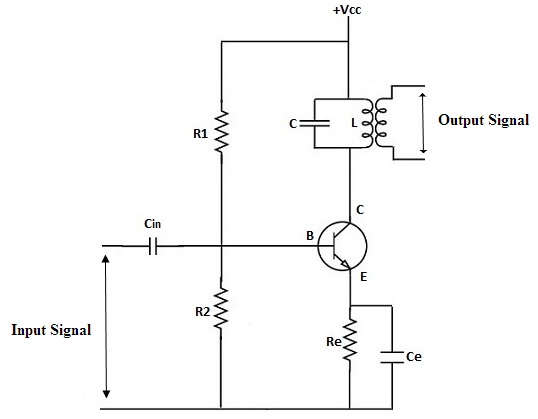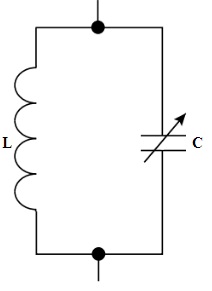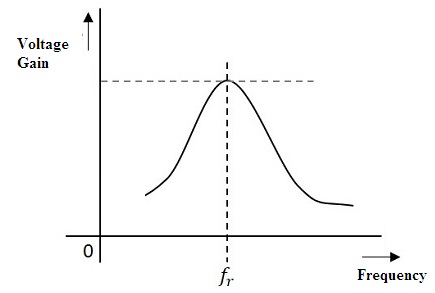In the field of wireless communication, the signal strength must be increased to transmit the signal for long distances. So this can be made possible by using the amplifier. It enhances the strength of the signal without altering the information. Amplifiers are of various types based on the frequency ranges and applications. The required ones are selected and placed in the circuit. For audio signal amplifications, audio amplifiers are used. The audio amplifiers are not capable enough of selecting a particular range of frequency signals as they deliver mixed frequencies ranging from 20 Hertz to 20 K Hertz. For this reason, the amplification of radio frequency signals can be done by using a special type of amplifier namely tuned amplifier.
What is a Tuned Amplifier?
Definition: An amplifier that amplifies a certain band of the frequency signals & consists of certain passband filters are known as tuned amplifiers. The frequencies in which these amplifiers operate are above the range of audio signals and below the range of IR signals. Further the signals out of defined range are blocked.

Tuned Amplifier Circuit
Tuned Amplifier Circuit
A basic tuned amplifier circuit consists of a transistor followed by a tuned circuit at the load. If the considered transistor is of type BJT with the configuration of common emitter where the load is placed at the collector. It operates at a certain selective range of frequencies. The selection range of these amplifiers can be done by using a special type of circuit known as a tuning circuit.

Tuned Circuit
This tuning circuit consists of an inductor and capacitor in parallel and they are present at the load of the amplifier. Every circuit of the well-defined range consists of central frequency is termed as the resonant frequency. This frequency can be altered by varying the value of a capacitor or inductor.
The frequency resonance of these amplifiers is given as
fr = 1/2π sqrt LC
The curve that determines the frequency response for this amplifier is

Frequency Response
These resonant circuits installed are consist of the high value of impedances. Further, the gain of these transistor amplifiers depends upon the value of the impedance at the load. If the impedance is high then the gain of these amplifiers is also high. Hence the efficiency of these amplifiers depends upon the tuning circuit.
Types of Tuned Amplifiers
Based on the tuning circuits present in the circuit these amplifiers are classified into three types. They are:
Please refer to this link to know more about transistor tuned amplifiers MCQs
Single Tuned Amplifiers
A multi-stage amplifier circuit is provided with the parallel tuning circuits at each stage of the load can be defined as single tuned amplifiers. A basic BJT with the configuration of the common-emitter by providing the tuner circuit at load can be used as this single tuned amplifier.
During the wireless communication of signals, the single tuned voltage amplification circuit is used to select the desired range of frequency and amplify it based on the requirement. But there is a situation or drawback called ‘Potential Instability’ in these amplifiers. To overcome the drawbacks double-tuned amplifiers are designed.
Double Tuned Amplifiers
A tuned amplifier circuit that consists of transformer coupling at individual stages can be defined as double tuned amplifiers. As the transformer consist of primary and secondary windings, each of its windings is separately tuned by using a capacitor. But the resonant frequency is the same during all stages. The 3dB bandwidth produced in this type of amplifier is larger in comparison to the single tuned amplifier.
Stagger Tuned Amplifiers
To overcome the design complexity of the double-tuned amplifiers, cascading process is applied to single tuned amplifiers. This cascaded version is known as a stagger tuned amplifier. At a certain range of bandwidth, two single tuned amplifiers are taken. It must be tuned such that both possess the same resonating frequencies. The frequency responses of both the single tuned amplifiers together give a large flat bandwidth in this type of amplifier.
Advantages of the Tuned Amplifiers
The advantages of the tuned amplifiers are:
- Signal to Noise ratio possessed by these amplifiers is good in comparison to other amplifiers.
- Bandwidth factor is variable in tuned amplifiers for amplification of signals.
Applications of Tuned Amplifiers
The applications of the tuned amplifiers are:
- The circuits of video signal amplification in the wideband range use these amplifiers.
- For wireless long-distance communications, these amplifiers due to high gains are used.
- At the receiving stage, these are used as radio frequency amplifiers. Even the devices used for communications that work on radio frequencies prefer these amplifiers.
FAQs
1). What range of frequency is used by tuned amplifiers?
Tuned amplifiers are designed to operate on the range of radio frequency signals. So, the range of these amplifier circuits will be from 20 KHertz to 300 Hertz.
2). What is meant by the tuned circuit?
A circuit in tuned amplifier present at the load which consists of the inductor and the capacitor connected in parallel to each other is known as a tuned circuit. The purpose of the tuning circuit is to set the desired range of frequencies known as the resonant frequency.
3). What is meant by a single tuned amplifier?
An amplification circuit that consists of a tuned circuit at each stage of the multi-stage tuned amplifier is known as single tuned amplifiers. Each stage is tuned with the same range of frequency.
4). What is an electronic tuned amplifier?
A tuned amplifier which consists of bandpass filters along with an amplifier circuit is known as an electronic tuned amplifier.
5). What synchronously tuned amplifier?
A tuned amplifier consists of multiple stages. If these stages are cascaded in such a way that each stage of it is identical and they are tuned to a similar value of frequencies is known as synchronously tuned amplifiers.
Please refer to this link to know more about Tuned Amplifier MCQs.
Thus, tuned amplifier circuitry can possess adjustable amplifiers or passband filters or both. Based on the application, the frequency is fixed or varying this is very advantageous for radio frequencies amplifications. As we discussed the bandwidth is increased in tuned amplifiers. Can you determine in such conditions whether the circuit complexity increases or decreases?